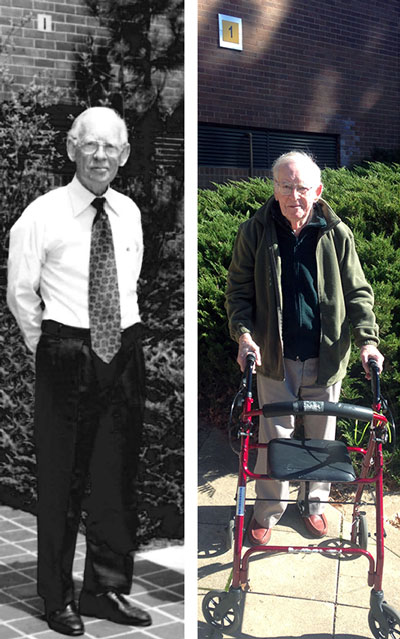
At 100 years of age this year, Dr Maxwell Frank Cooper Day AO FAA is the Australian Academy of Science’s oldest living Fellow.
An ecologist and entomologist who collaborated with Australian greats of both those disciplines, Dr Day was the founding Head of CSIRO’s Division of Forest Research, and worked extensively with the CSIRO insect collection.
Dr Day boasts a 74-year publishing career, beginning in 1938 with ‘Notes on the terrestrial ecology of the five Islands’, in Proceedings of the Linnean Society of NSW. His most recent publication, in 2012, examined the biology of the Australian scribbly gum moth, revealing 11 new species, the larvae that was making the scribbles, and a unique interaction between the tree and the moth.
Elected to the Academy in 1956—just two years after the Academy was founded—Dr Day still clearly remembers the 1958 ceremony at which then Prime Minister Sir Robert Menzies officially laid the foundation stone of what is now known as the Shine Dome.
Dr Day said recently that the most satisfying achievement of his long career was the work he did with the late Professor Frank Fenner AC FAA FRS on developing the myxomatosis virus which played a major part in controlling Australia’s rabbit problem.
‘The government introduced myxo into Australia in 1950 to control rabbits as they had become a serious problem across the country,’ he told Academy staff.
‘Frank, who I had never previously met, approached me at a meeting here in Canberra and said: “We believe myxomatosis might be mosquito-borne. Would you be interested in taking on the mosquito side of it while I do the biology?”, and so for the next five years Frank and I worked on the transmission of the myxo virus.
‘Frank Fenner was a very remarkable person, a superb collaborator and a close friend. He was an inspiration to me—initially for those years when we worked on myxomatosis, and then for the rest of Frank’s life.’
Dr Day is also proud of his work establishing the Division of Forest Research within CSIRO, which led to Australia’s international recognition for its contribution to forest research.
He was inspired to become a scientist by the eminent entomologist G. A. Waterhouse.
‘G. A. Waterhouse was a marvellous man and extraordinarily good to me,’ Dr Day said.
‘Regularly he would take [his nephew] Doug and me insect collecting around the Sydney area. As kids we got to know the Sydney sandstone insect fauna very well but we also learnt about the distribution of insects and the plants they fed on. By the time I got to University, I had a pretty good knowledge of the biology of the Sydney Basin.’
As for the future, Dr Day would like to see more diversification and collaboration across disciplines.
‘It would appear that all the sciences are becoming more and more specialised and that means that there is less opportunity now to see the big picture,’ he said.
‘I’d like to think that scientists of the future can also think broadly and put their specialisation into a broader context.’
Find out more about Dr Max Day's life and work.
© 2025 Australian Academy of Science